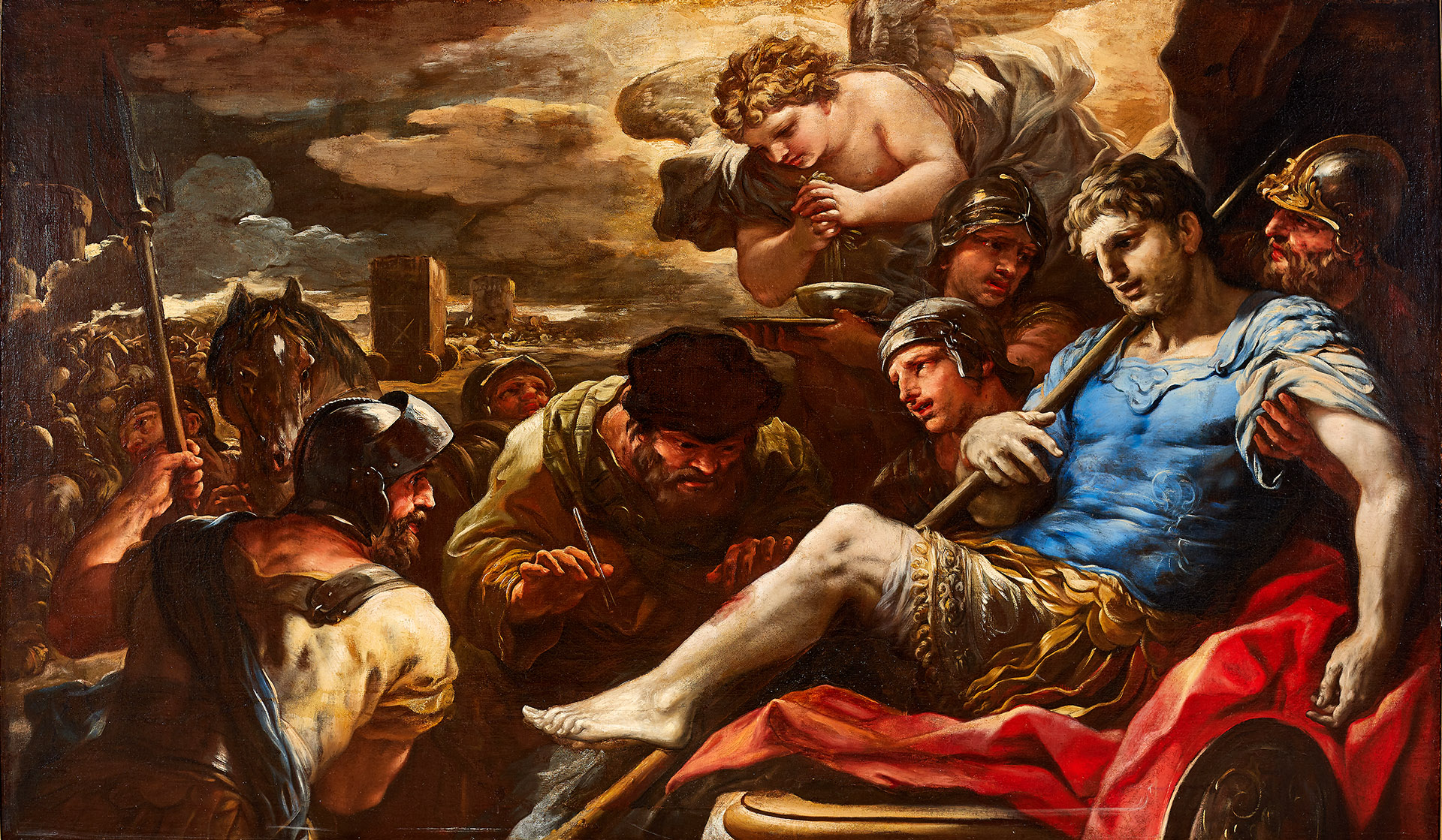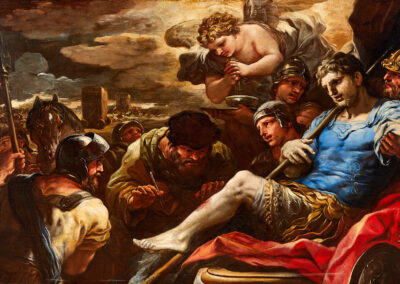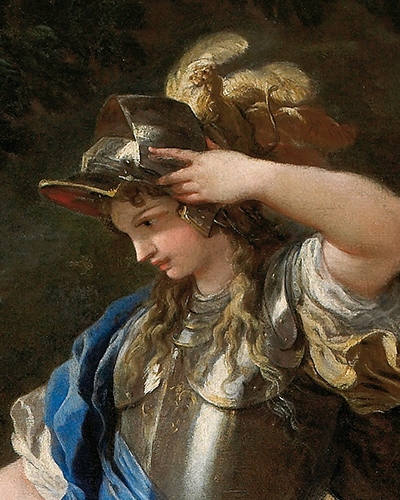Against the background of the siege of Jerusalem, in which, among the debris of the battle, some siege towers stand out, evoking the fierce resistance of its defenders, Giordano visually translates, with fitting literalness, one of the last scenes of canto XI of the epic poem Jerusalem Liberated by Torquato Tasso, a painting that forms part of the series of twelve that he painted for the viceroy of Naples, the 9th Count of Santisteban, around 1690. In it, Godfrey of Bouillon's guardian angel miraculously heals the wound in his leg caused by the arrow shot by the Saracen archer Clorinda at the moment when, in order to climb the walls of the Holy City with greater agility, he exchanged his heavy shield for the lighter one of his squire.
Eager to return to combat, Godfrey asks the old man Erotimo, who knows the power of plants, to pull out the iron stuck in his leg, but neither with herbs nor with his expert hand nor with the help of instruments does he manage to remove the sharp point. It is then that the Christian general's guardian angel, taking pity on his cruel pain, flies to Mount Ida to gather the dyctamus - the herbs which the goats of Crete graze to drive out the darts of their hunters - mixes it with panacea and water from the fountain of Lydia and, invisible to mortal eyes, pours the salutary potion over the bath prepared to wash the hero's sore. As soon as the old man Erotimus douses the wound with the miraculous ointment, the harpoon comes out of its own accord, the wound closes and the pain disappears.
From the first inventory of the IX Count of Santisteban's collection, this painting is recorded under the title "...".Apparition of the angel to Godfrey"This is an excessively generic rubric for a poem in which the angels, like the gods in classical epic, are constantly intervening and present themselves on several occasions to the military leader of the First Crusade. It is more surprising that in the 1877 catalogue this scene corresponds to stanza 92 of canto XVIII, in which the archangel Michael, in armour and sword, signals victory to Godfrey, showing him a heavenly militia assisting the Crusader army in its final attack. On the other hand, the measurements of the 1716 inventory, 9.5 by 7.5 palms, are more in keeping with the width than the height of this painting, which could explain a report from 1921 that states that, together with the one in Rinaldo in the gardens of Armida's palacewas damaged in the 1917 fire at the palace of the Duke and Duchess of Medinaceli in the Plaza de Colón, at which point it may have been cut. Another plausible explanation is that the appraiser, the painter Antonio Palomino, made a mistake with the measurements of another painting in the series, Tancred for Erminia, as its 10 by 6 spans fit perfectly with those of this canvas.



